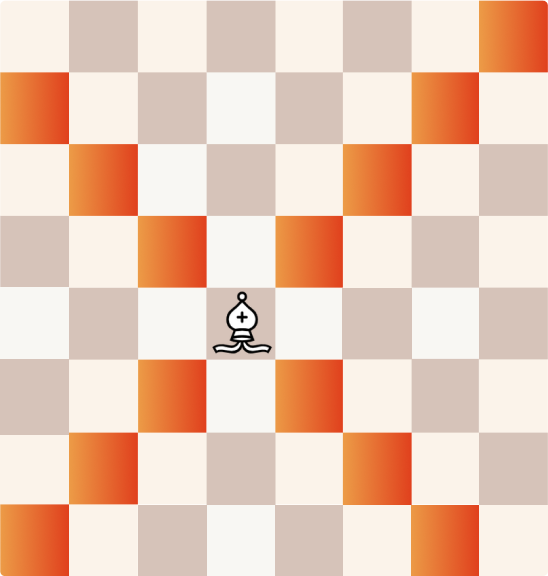A long-range chess piece that moves diagonally across the board, limited to squares of the same color it started on.

Introduction
The bishop is one of the most powerful and dynamic pieces in chess, known for its long-range diagonal movement. While often overshadowed by the queen and rooks, bishops play a crucial role in controlling the board and executing strategic plans. But where did this piece originate, how has its role evolved over time, and why is it important to master bishop play? This article explores the fascinating history and modern applications of the bishop in chess.
1. The History of the Bishop
The bishop’s origins trace back to Chaturanga, the ancient Indian precursor to chess. In this early form of the game, the piece that later became the bishop was called the Gaja (meaning elephant), and it moved only two squares diagonally, able to jump over other pieces.
Evolution in Different Cultures
As chess spread across different regions, the piece took on new names and movements:
- In Persia, it was known as the « Fil » (elephant) and retained its limited movement.
- In Medieval Europe, the piece underwent significant transformation. In English-speaking countries, it became the bishop, likely influenced by the piece’s mitre-shaped depiction in chess sets.
- In France, it was called the « Fou » (jester), while in Russia, it became the « Slon » (elephant).
By the 15th century, chess underwent major rule changes to speed up the game, giving the bishop its modern long-range diagonal movement.
2. Grandmasters Who Mastered Bishop Play
Several legendary chess players have demonstrated brilliant bishop strategies throughout history.
José Raúl Capablanca
The Cuban world champion emphasized piece activity and frequently used bishops to dominate open positions.
Mikhail Botvinnik
Botvinnik was a master of bishop pair control, proving that two bishops can outmaneuver knights in open positions.
Bobby Fischer
Fischer often favored the bishop over the knight, famously stating, « Tactics flow from a superior position, » which he achieved through precise bishop play.
Magnus Carlsen
Carlsen excels at maneuvering his bishops to their optimal squares, especially in endgames, where his deep understanding of piece coordination helps him outplay opponents.
3. The Strategic Role of the Bishop
Long-Range Control
The bishop’s ability to control long diagonals makes it ideal for both attack and defense. Placing bishops on open diagonals allows them to influence the entire board.
The Bishop Pair Advantage
Two bishops working together can dominate a position, particularly in open games where they can exert pressure across the board.
Good vs. Bad Bishops
- A good bishop has freedom of movement and complements the pawn structure.
- A bad bishop is blocked by its own pawns, limiting its effectiveness.
Understanding how to improve a bad bishop or trade it for a better piece is key to strong positional play.
Bishops in the Endgame
In many endgames, bishops are superior to knights due to their ability to cover long distances quickly. However, a bishop vs. knight endgame often depends on the pawn structure.
4. Why Understanding the Bishop Is Crucial
Positional Mastery
Strong players know how to position their bishops effectively, whether for controlling key squares or supporting an attack.
Tactical Opportunities
Bishops create powerful pinning, skewering, and discovered attack opportunities, making them dangerous tactical weapons.
Dynamic vs. Static Play
Unlike knights, which excel in closed positions, bishops thrive in open games, making them crucial in certain types of positions.
5. Conclusion
The bishop is a versatile and powerful chess piece with a rich history and critical strategic importance. Learning how to use bishops effectively—whether by controlling open diagonals, leveraging the bishop pair, or executing tactical motifs—can significantly improve your game. By studying how top players use bishops and practicing their placement in your own games, you can elevate your positional and tactical play to a new level.

